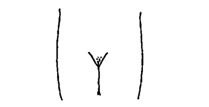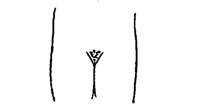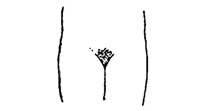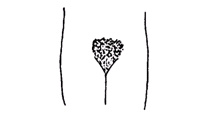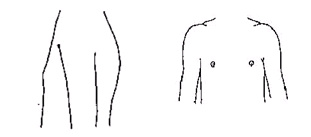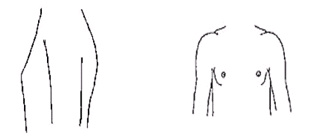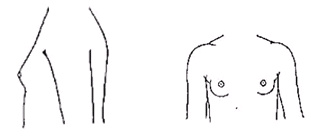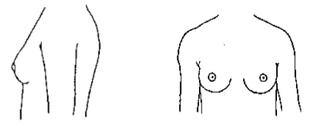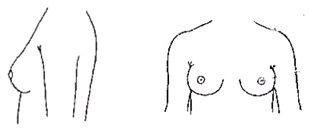Protocol - Assessment of Pubertal Development - Child and Adolescent Female
- Assessment of Pubertal Development - Child and Adolescent Male
- History of Prepubertal Development - Female
- History of Prepubertal Development - Male
Description
The mother of the female participant uses the Tanner staging drawings to assess her breast development and pubertal hair.
Specific Instructions
The Sickle Cell Disease Genitourinary Working Group notes that patients and research participants with chronic diseases, like sickle cell disease, can have a delay in the start of puberty and with that relative short stature. Investigators should track height and stage of puberty carefully as the participant enters adolescence
Availability
This protocol is freely available; permission not required for use.
Protocol
Avon Longitudinal Study of Parents and Children (ALSPAC), Growing and Changing (8), Mother/Daughter Questionnaire (97- 157 Months)
We would like to assess the stage of your daughter’s physical development using the drawings on the next pages. These indicate various stages of puberty commonly used by doctors to assess the growth and development of girls.
We need to know which drawings most closely match your daughter’s stage of development at the moment.
Not all children follow the same pattern of development. Just pick the stage that is closest, based on both the picture and the description.
The drawings below show different amounts of female pubic hair. A girl can go through each of these five stages shown. Please look at each of the drawings. It is also important to read the description.
Put a tick in the box to the right of the drawing that is the closest to the amount of pubic hair your daughter has.
|
| 1 [ ] | There is no pubic hair |
|
| 2 [ ] | There is a little long, lightly coloured hair. This hair may be straight or a little curly. |
|
| 3 [ ] | The hair is darker in this stage. It is coarser and more curled. It has spread out and thinly covers a bigger area. |
|
| 4 [ ] | The hair is now as dark, curly, and coarse as that of an adult woman. However, the area that the hair covers is not as large as that of an adult woman. The hair has not spread out to the legs. |
|
| 5 [ ] | The hair is like that of an adult woman. It also covers the same area as that of an adult woman. The hair usually forms a triangular pattern as it spreads out to the legs. |
| 6 [ ] | Not sure |
The drawings below show stages of the way breasts develop. A girl can go through each of the five stages shown, although some girls skip some stages. Please look at each of the drawings. It is also important to read the descriptions.
Put a tick in the box to the right of the drawing that is closest to your daughter’s current breast stage.
|
| 1 [ ] | The nipple is raised a little in this stage. The rest of the breast is still flat. |
|
| 2 [ ] | This is the breast bud stage. In this stage the nipple is raised more than in stage 1. The breast is a small mound. The dark area around the nipple (areola) is larger than in stage 1. |
|
| 3 [ ] | The areola and the breast are both larger than in stage 2. The areola does not stick out away from the breast. |
|
| 4 [ ] | The areola and the nipple make up a mound that sticks up above the shape of the breast. (Note: This stage may not happen at all for some teenagers. Some teenagers develop from stage 3 to stage 5 with no stage 4.) |
|
| 5 [ ] | This is the mature adult stage. The breasts are fully developed. Only the nipple sticks out in this stage. The areola has moved back in the general shape of the breast. |
| 6 [ ] | Not sure |
NOTE: Your daughter’s pubic hair stage may or may not be the same as her stage of breast development.
NOTE: Your pubic hair stage may or may not be the same as your stage of breast development.
Personnel and Training Required
NoneEquipment Needs
NoneRequirements
| Requirement Category | Required |
|---|---|
| Major equipment | No |
| Specialized training | No |
| Specialized requirements for biospecimen collection | No |
| Average time of greater than 15 minutes in an unaffected individual | No |
Mode of Administration
Self-administered questionnaire
Lifestage
Child, Adolescent
Participants
Mothers of young women aged 8-13 years old.
Selection Rationale
The Avon Longitudinal Study of Parents and Children (ALSPAC) provides Tanner stage drawings that have been widely used for decades with adolescent males and females to determine their own perceptions of pubertal development.
Language
English
Standards
| Standard | Name | ID | Source |
|---|---|---|---|
| Logical Observation Identifiers Names and Codes (LOINC) | Assess pubertal dev female proto | 62644-0 | LOINC |
| Human Phenotype Ontology | Puberty and gonadal disorders | HP:0008373 | HPO |
Derived Variables
None
Process and Review
The PhenX Sickle Cell Disease Genitourinary Working Group (WG) reviewed this protocol in May 2022. Guidance from the WG includes:
- Add new protocol
Protocol Name from Source
Avon Longitudinal Study of Parents and Children (ALSPAC), Growing and Changing (8), Mother/Daughter Questionnaire - 97 - 157 Months
Source
University of Bristol, Department of Social Medicine. (n.d.). Avon Longitudinal Study of Parents and Children. Mother/Daughter Questionnaire: Growing and Changing. Oakfield Grove, Bristol, UK: Author. Questions B1-B5 and C1-C5.
General References
Jenner, M. R., Kelch, R. P., Kaplan, S. L., & Gr?mbach, M. M. (1972). Hormonal changes in puberty. IV. Plasma estradiol, LH, and FSH in prepubertal children, pubertal females, and in precocious puberty, premature thelarche, hypogonadism, and in a child with a feminizing ovarian tumor. Journal of Clinical Endocrinology and Metabolism, 34(3), 521-530.
Maliqueo, M., Sir-Peterman, T., Perez, V., Echiburu, B., Ladron de Guevara, A., Galvez, C., Crisosto, N., & Azziz, R. (2009). Adrenal function during childhood and puberty in daughters of women with Polycystic Ovary Syndrome. Journal of Clinical Endocrinology and Metabolism, 94, 3282-3288.
Marshall, W., & Tanner, J. (1969). Variations in the pattern of pubertal changes in girls. Archives of Disease in Childhood, 44, 291-303.
Sizonenko, P. C., Burr, I. M., Kaplan, S. L., & Gr?mbach, M. M. (1970). Hormonal changes in puberty. II. Correlation of serum luteinizing hormone and follicle stimulating hormone with stages of puberty and bone age in normal girls. Pediatric Research, 4(1), 35-45.
Protocol ID
100103
Variables
Export Variables| Variable Name | Variable ID | Variable Description | dbGaP Mapping | |
|---|---|---|---|---|
| PX100103_Female_Child_Breast_Development_Stage | ||||
| PX100103020000 | Put a tick in the box to the right of the more | N/A | ||
| PX100103_Female_Child_Pubic_Hair_Development_Stage | ||||
| PX100103010000 | Cross the box that is closest to your more | N/A | ||
Measure Name
Assessment of Pubertal Development
Release Date
August 15, 2023
Definition
Separate male- and female-specific protocols to assess stage of puberty. Stage of puberty can be assessed by pubic hair, female breast development, and the size and shape of the male testes.
Purpose
The purpose of these protocols is to assess stage of puberty.
Keywords
assessment of pubertal development - female, Reproductive health, puberty, breast development, testes development, Tanner staging, Avon Longitudinal Study of Parents and Children, ALSPAC
Measure Protocols
| Protocol ID | Protocol Name |
|---|---|
| 100101 | Assessment of Pubertal Development - Teenage Female |
| 100102 | Assessment of Pubertal Development - Teenage Male |
| 100103 | Assessment of Pubertal Development - Child and Adolescent Female |
| 100104 | Assessment of Pubertal Development - Child and Adolescent Male |

